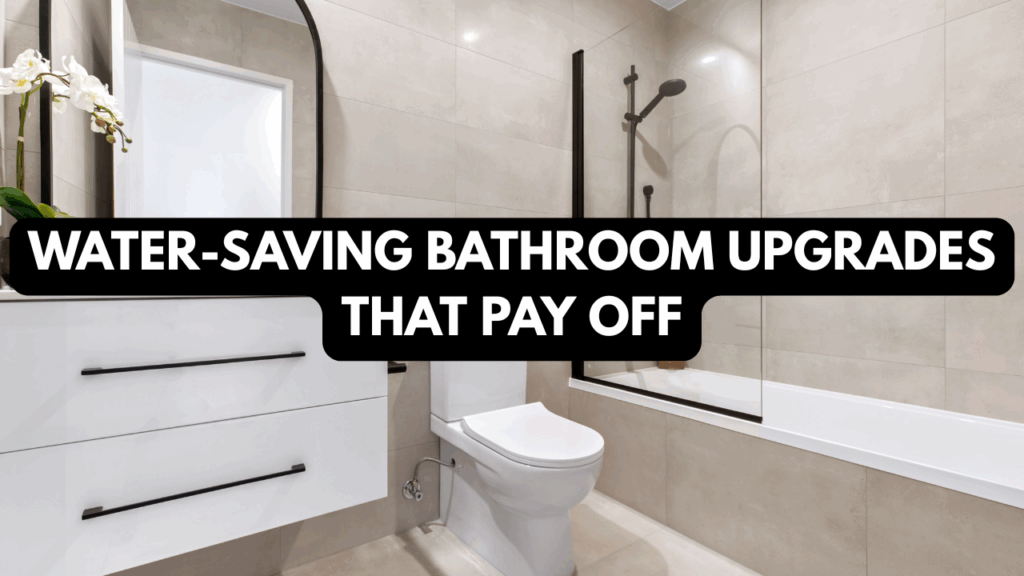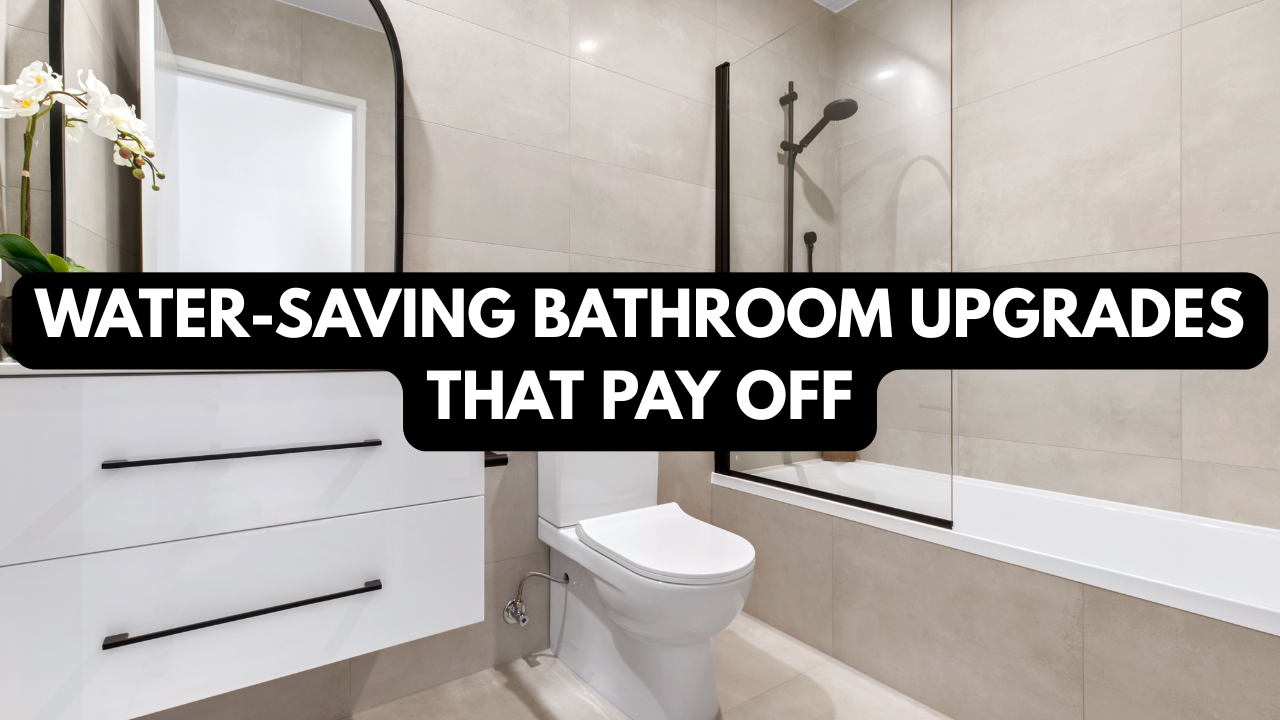
When it comes to conserving water at home, the bathroom is ground zero. From showers to toilets, this space is where a large portion of daily water usage occurs. According to the EPA, bathrooms account for over 50% of indoor water consumption in an average household. The good news? Simple bathroom upgrades can drastically reduce water use while saving you money on utility bills.
Let’s explore the most effective water-saving bathroom upgrades and how they pay off in the long run.
Why Upgrade Your Bathroom Fixtures?
- Lower bills: Reduced water and energy consumption leads to significant cost savings.
- Eco-friendly living: Conserving water helps reduce strain on local supplies.
- Improved efficiency: Modern fixtures often provide better performance with less waste.
- Sustainability: Every gallon saved contributes to long-term environmental protection.
Top Water-Saving Bathroom Upgrades
1. Low-Flow Toilets
Traditional toilets can use up to 6 gallons per flush. Low-flow or dual-flush toilets cut that down to 1.28–1.6 gallons per flush, saving thousands of gallons annually.
Payoff: While they require an upfront investment, the reduction in water bills quickly makes up for the cost.
2. Water-Efficient Showerheads
Standard showerheads use about 2.5 gallons per minute (gpm), while modern low-flow showerheads reduce usage to 1.5–2.0 gpm without sacrificing water pressure.
Payoff: For a family of four, this upgrade can save up to 2,900 gallons of water per year.
3. Faucet Aerators
A small, inexpensive device that screws onto your sink faucet, an aerator reduces water flow by mixing in air. This simple upgrade cuts usage from 2.2 gpm to about 1.0 gpm.
Payoff: One of the cheapest bathroom upgrades, often costing under $10, with immediate savings.
4. Leak Repairs and Smart Leak Detectors
A dripping faucet or a running toilet can waste hundreds of gallons daily. Fixing leaks and installing smart leak detectors prevent water and money from going down the drain.
Payoff: Quick return on investment—often within weeks.
5. Greywater Recycling Systems
Advanced but increasingly popular, these systems capture water from sinks, showers, and tubs, then reuse it for toilet flushing.
Payoff: Although installation costs are higher, they provide long-term water savings for eco-conscious households.
6. Tankless Water Heaters
Not directly a water-saver, but they eliminate the need to let water run while waiting for it to heat. Immediate hot water access helps reduce “waiting waste.”
Payoff: Energy and water savings combined make this a smart long-term investment.
7. Smart Showers and Timers
Digital showers allow you to set time and temperature preferences. Pairing them with shower timers encourages shorter showers, saving water and energy.
Payoff: Especially effective in large households where shower time can add up quickly.
Table: Common Bathroom Upgrades and Benefits
| Upgrade | Water Saved | Cost Savings |
|---|---|---|
| Low-flow toilets | Up to 13,000 gallons/year | $100+ annually |
| Efficient showerheads | ~2,900 gallons/year (per household) | $70+ annually |
| Faucet aerators | ~700 gallons/year per faucet | $20+ annually |
| Leak repairs | Hundreds of gallons per day | Varies, often immediate |
| Greywater systems | 20–30% of household use | Long-term, varies |
| Tankless water heaters | Gallons wasted while waiting for heat | Energy + water bill savings |
| Smart showers/timers | 5–10 gallons per shower | Adds up over time |
The Bigger Picture: Why These Upgrades Matter
- Individual savings multiply: If every household installed just one low-flow toilet, the U.S. could save over 360 billion gallons annually.
- Climate resilience: Reduced water demand eases pressure during droughts.
- Economic benefits: Lower utility bills mean long-term financial relief for households.
Overview Table
| Bathroom Fixture | Eco-Friendly Upgrade | Impact |
|---|---|---|
| Toilet | Low-flow or dual-flush | Saves thousands of gallons yearly |
| Showerhead | Low-flow | Reduces water per shower |
| Faucet | Add aerators | Immediate water bill reduction |
| Leaks | Fix + smart detectors | Prevents major daily waste |
| Water system | Greywater recycling | Long-term conservation |
| Heater | Tankless | Saves waiting water + energy |
| Showering habits | Smart showers/timers | Encourages efficiency |
Final Thoughts
Water-saving bathroom upgrades are not just about conservation—they’re about financial return and sustainable living. Some solutions, like faucet aerators, are quick fixes, while others, like greywater systems, represent long-term eco-investments. By making these changes, homeowners can save thousands of gallons annually and play a crucial role in protecting the planet’s most precious resource.
FAQs
Q1: Do low-flow fixtures reduce water pressure?
No—modern designs ensure strong performance while using less water.
Q2: Are bathroom water upgrades expensive?
Not necessarily. Options like aerators and showerheads are inexpensive, while larger systems require more investment.
Q3: What’s the easiest upgrade to start with?
Installing faucet aerators and efficient showerheads—they’re low-cost, quick to install, and highly effective.

